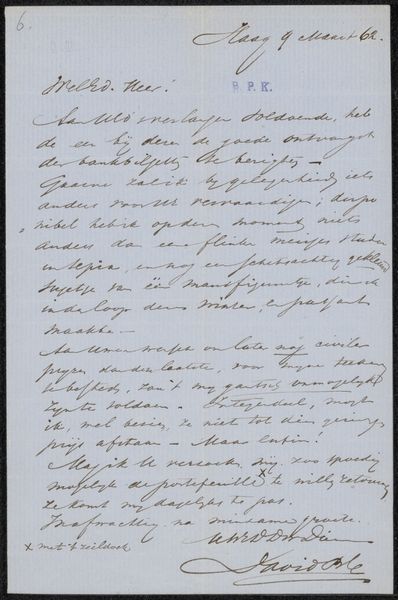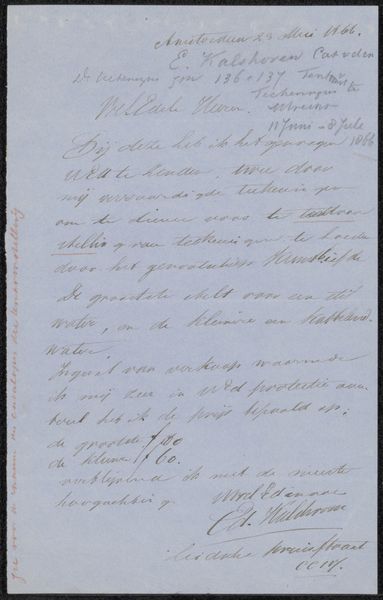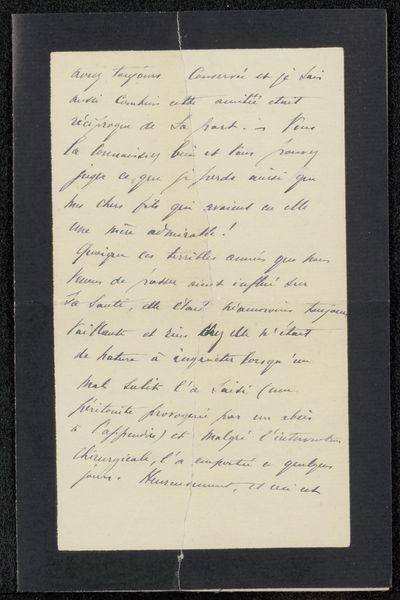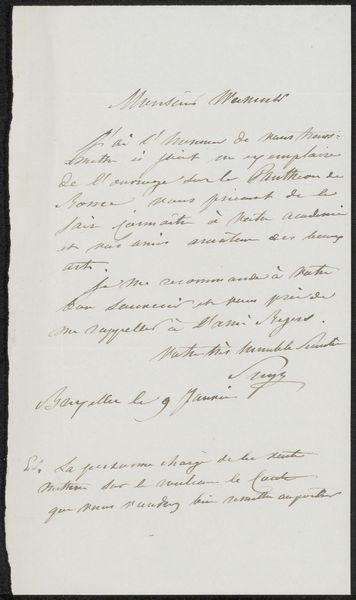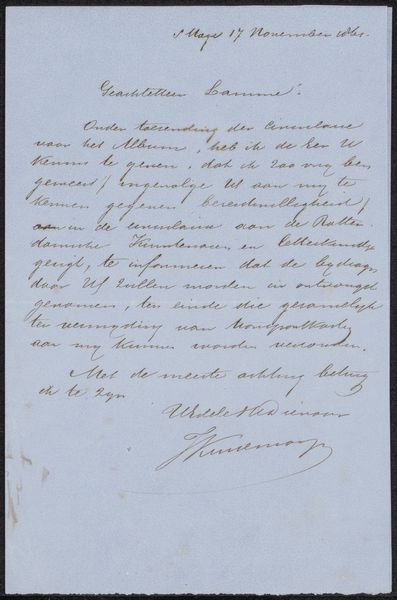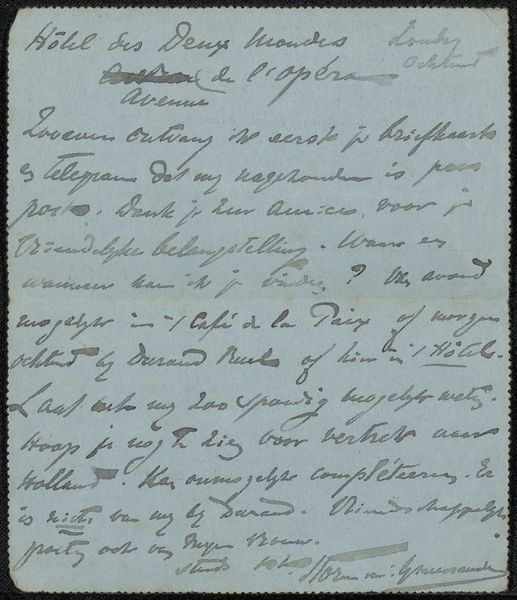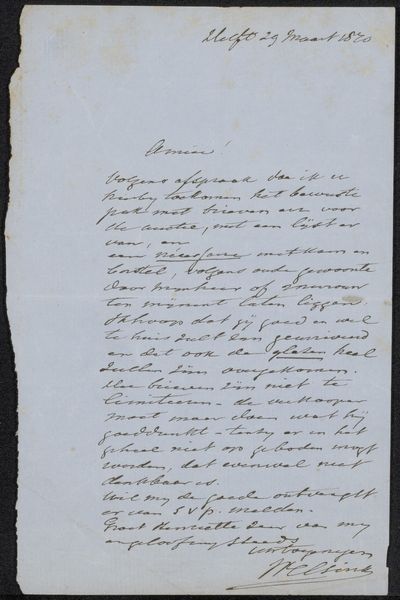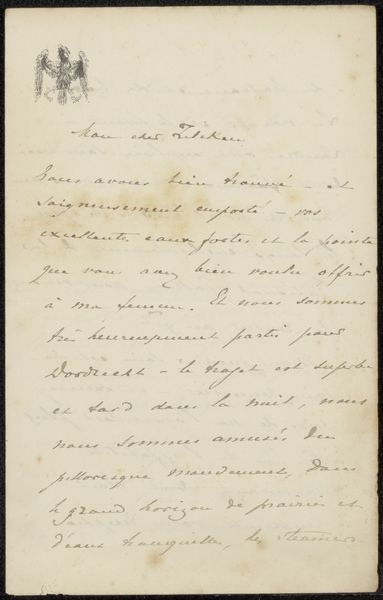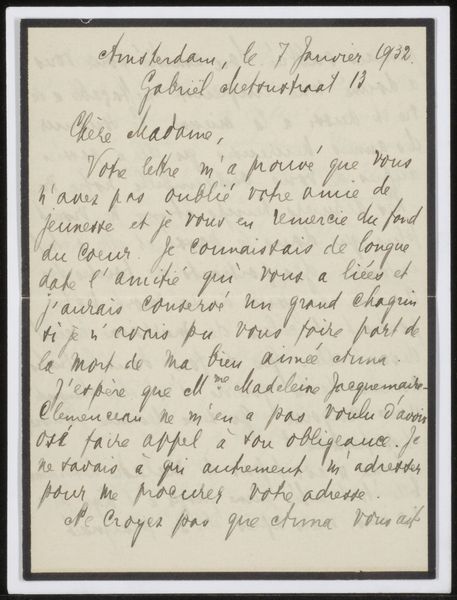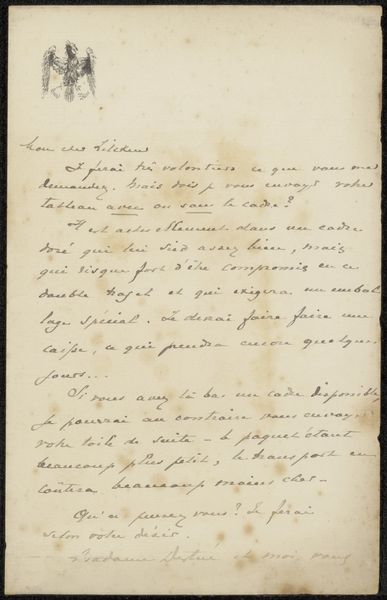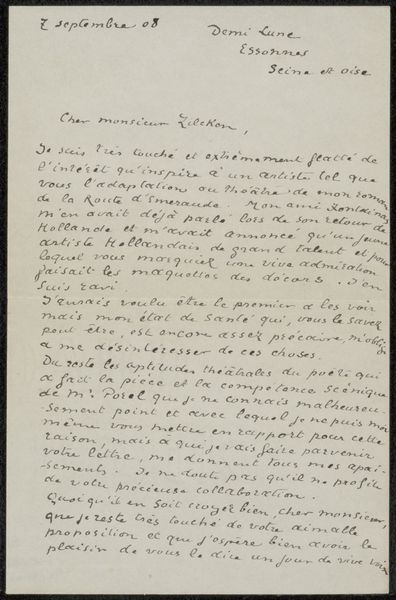
drawing, textile, paper, ink
#
portrait
#
drawing
#
textile
#
paper
#
ink
#
academic-art
#
miniature
#
calligraphy
Copyright: Rijks Museum: Open Domain
Curator: Editor: Looking at this piece, "Brief aan Philip Zilcken," possibly from 1928 by Ch. Van Moorsel, what strikes you first? It appears to be ink on paper and maybe textile. The format gives it the feeling of a miniature. Editor: Well, it immediately feels so personal. It’s just a letter, really, but elevated by the care in the calligraphy and even the apparent quality of the paper. It makes me wonder about the social context. What was the purpose of turning it into art, or preserving it? Curator: Exactly! The letter, its materiality, and its means of production are critical here. It exists because someone, likely from a position of some comfort, had the resources – paper, ink, time – to engage in correspondence. It's an artifact of a particular class and era, no? How does it sit in a broader understanding of what constitutes "art"? Editor: I see what you mean! The text is inviting Philip Zilcken for tea and mentions introducing his “two pretty daughters”--that also says something about leisure and class, doesn't it? Preserving that is like an assertion of that lifestyle. Curator: Precisely. Think about the labor involved. Not just the author’s, but also in the paper production, the ink, even the post. How many hands were involved in creating and delivering this small, seemingly simple object? Its value isn't intrinsic; it's assigned through cultural significance and its ability to represent that specific time and class. Editor: So, examining its materiality and production process opens up all these avenues for thinking about its societal value... Curator: It does, and by challenging these traditional ideas of “high art”, and emphasizing that context, we see the artwork isn't isolated, is it? It's a product of a specific cultural machine. Editor: That makes a lot of sense. I'm not sure I would have picked up on all of those connections without considering it as a material object embedded in a historical network. Curator: It all changes when you foreground those things! This is where true understanding comes in, that intersection between making and culture.
Comments
No comments
Be the first to comment and join the conversation on the ultimate creative platform.
